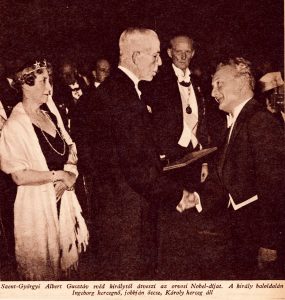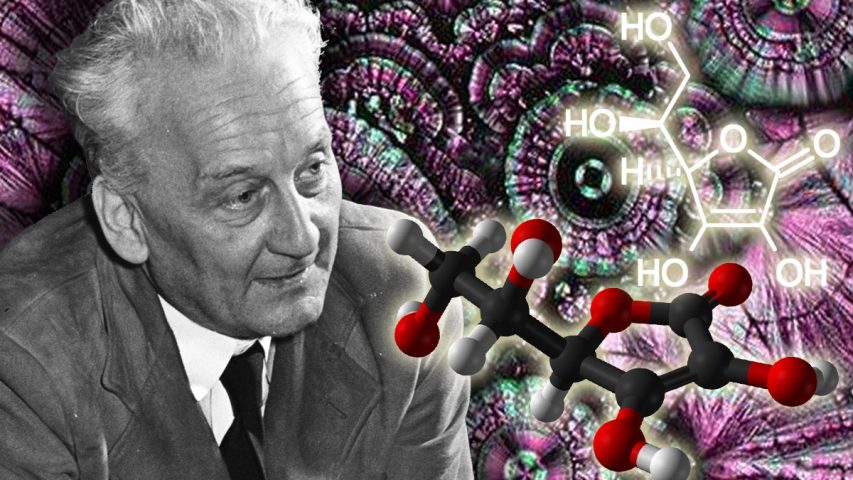This year marks what would have been the 127th birthday of Albert Szent-Györgyi, the scientist who first isolated vitamin C. One of the early pioneers of vitamin research, his work was rewarded in 1937 with a Nobel prize. Right from the beginning, however, Szent-Györgyi felt the medical profession had misled the public about the implications of his findings. Attesting to the remarkable safety of vitamin C, he insisted that one can take any amount of it without the least danger.
Albert Szent-Györgyi was born in Budapest, Hungary, in 1893. Raised in a family that had three generations of scientists, he became interested in science at an early age. Szent-Györgyi began studying medicine at the Semmelweis University medical school in Budapest in 1911, but his studies were interrupted by the outbreak of World War I.
Sent to serve as an army medic, he soon became disillusioned with the conflict. A fervent proponent of disarmament and peace, Szent-Györgyi eventually shot himself in the arm deliberately, claimed to have been hit by enemy fire, and managed to get home to finish his medical degree. After graduating from Budapest in 1917, he went on to do further study and research at various universities across Europe. He also spent a year at the Mayo Clinic in the United States.
Discovery of vitamin C

Albert Szent-Gyorgyi receiving the 1937 Nobel Prize in Physiology or Medicine in Stockholm, Sweden
While studying oxidation reactions that cause a brown pigmentation to appear in certain fruits as they decay, Szent-Györgyi discovered that cabbages contain a reducing agent (a substance that donates electrons in a chemical reaction) that prevents these reactions from occurring. He also found that the adrenal glands of animals contained this agent. After isolating the substance, which at the time he called ‘hexuronic acid’, he obtained his PhD from the University of Cambridge in England in 1929.
Returning to Hungary in 1930 to become professor of medicinal chemistry at the University of Szeged, Szent-Györgyi discovered that local varieties of paprika (Hungarian red pepper, Capsicum annuum) were a rich source of hexuronic acid. Aided by Joseph Svirbely, a young American post-doctoral fellow at the university, he proceeded to test the acid for its anti-scurvy properties.
Szent-Györgyi and Svirbely carried out an experiment using guinea pigs, animals that were already known to be prone to scurvy. Half of the guinea pigs were fed with food that had been boiled, which Szent-Györgyi and Svirbely knew would destroy its hexuronic acid, while the rest were given a diet enriched with the substance. The animals that were fed boiled food subsequently developed scurvy-like symptoms and died, while those given the hexuronic acid thrived. Szent-Györgyi and Svirbely concluded that hexuronic acid was an effective means of preventing and treating scurvy. In recognition of its anti-scorbutic activity, hexuronic acid was renamed ascorbic acid and acknowledged to be the essential nutrient vitamin C.
Szent-Györgyi went on to identify fumaric acid and other molecules involved in what would later become known as the Krebs cycle, a series of reactions that are the main source of energy for cells and an important part of aerobic respiration. He was subsequently awarded the 1937 Nobel prize in Physiology or Medicine for his “discoveries in connection with the biological combustion processes, with special reference to vitamin C and the catalysis of fumaric acid.”
Medical profession misled the public
Szent-Györgyi’s work with guinea pigs taught him that a wide range of states exist between health and scurvy. He observed that guinea pigs fed on restricted amounts of vitamin C, while not showing signs of scurvy, are greatly depleted of their stores of the vitamin. Recognizing that the medical profession had failed to understand the implications of this, he discussed it in a letter he sent to the two-time Nobel prize-winning scientist Linus Pauling in 1970 (as reported in Pauling’s 1986 book ‘How To Live Longer And Feel Better’).






